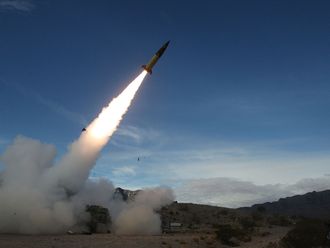Washington: A new report from an independent scientific panel says BP and its contractors missed and ignored key warning signs and failed to fully recognize important risks in the days and hours leading up to the massive Gulf of Mexico oil well blowout.
Some of the panel's conclusions appear more critical of BP, the owner of the well, than preliminary findings issued last week by the presidential oil spill commission.
That commission said while BP made decisions that saved time it found no evidence that employees consciously chose saving money over safety. The National Academy of Engineering, which issued the latest report, said BP and others involved in the disaster failed to manage risks and didn't even have a system in place to weigh safety against costs.
Several entities, including the Coast Guard, the Justice Department, Congress and BP itself, also are looking into the causes of the worst offshore oil spill in US history.
The various inquiries have so far come up with similar core findings: That BP and its partners misread critical pressure tests, that the cement job meant to seal the well didn't work, and that the blowout preventer failed to stop the gusher as designed.
Yet the investigations vary sharply in emphasis and tone. BP's internal investigation spread the blame around, saying its partners on the doomed rig shared responsibility. The presidential panel said a cascade of failures, not any single decision, led to the disaster.
The engineering academy, which issued its report late Tuesday, focused on flawed and risky decision-making. It said that the companies involved downplayed the risks of deepwater drilling even as they insisted they never compromised safety.
"A great number of decisions, all of which appear to us to be questionable ... also appeared to be justified by those individuals and those companies involved," said Donald Winter, chairman of the 15-member panel.
The reasons behind the differences in the panels' findings are unclear. But they may have something to do with who is doing the investigating and why. The presidential panel included academics and an environmentalist but is led by a former Democratic senator and a former EPA administrator who served during the George H.W. Bush administration. The academy panel is composed entirely of scientists and marine, petroleum, and chemical engineers. BP's panel was made up of BP employees.
Some are tasked with looking at just the cause, and not the broader safety culture at the companies involved. Others are looking at offshore drilling broadly.
Winter, a professor of engineering practice at the University of Michigan, said in an interview Wednesday that the behavior leading up to the oil spill would be considered unacceptable in companies that work with nuclear power or aviation. The committee is considering whether an independent technical authority, similar to that used in the submarine and nuclear fields, would provide critical checks and balances that were lacking.
"In an operation like this you have to recognize the uncertainties of where you are going," Winter said. Drilling an exploratory well more than three miles (five kilometres) beneath the ocean's surface involves significant unknowns, such as the underlying geology.
Among the hazards highlighted in the panel's report were several tests that indicated the cement at the bottom of the hole would not be an effective barrier to an influx of oil and gas. More than a month before the disaster, BP also lost drilling materials deep in the hole - a situation that hinted at the challenges of the well, but was not used to address risks.
The report, while similar to previous investigations, does not weigh in on two central points - the path the oil and gas took to reach the rig and whether the type or mixture of cement was faulty. BP, and the presidential commission, both believe the flow of oil went up the inside of the pipe, not the sides - a conclusion that puts the blame more on Halliburton Co., the cement contractor, than on BP's well design. They have also highlighted problems with Halliburton's cement mixture and tests with similar blends that suggested it would fail.
The engineering panel said that those two points are still in dispute, and instead reiterated concerns highlighted elsewhere about BP's decision to run a single piece of pipe from the ocean floor to the well's bottom and to use fewer centralizers than recommended to center the pipe during cementing.
The report says it may not be possible to ever establish exactly what happened because much of the evidence was lost when 11 workers died and the rig sunk in April.
BP said some of the differences between the academy's work and that of the commission are the result of new evidence that has yet to be considered by the academy.
"The National Academy of Engineering/National Research Council Committee's interim report addresses similar issues as the Presidential Commission and BP's own internal investigation but draws no final conclusions regarding the April 20th accident," the company said in a news release.
Halliburton Co., in a statement issued Wednesday, said that it was still reviewing the 28-page document, but said "it notes that a variety of decisions made by BP may have contributed to the incident."
A final report is due June 2011.
---










